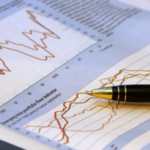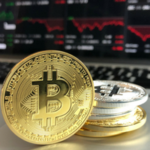| 06-02-2018 | TIPCO | Sponsored content |
 The electronic analysis of bank fees not only cuts costs but also helps to sustainably improve the quality of treasury processes.
The electronic analysis of bank fees not only cuts costs but also helps to sustainably improve the quality of treasury processes.
Monitoring bank fees is not a task which is particularly popular in treasury departments. The idea of working through stacks of paper in the hope of understanding confusing bank fee nomenclature doesn’t usually generate much enthusiasm. This onerous task is often delegated, or statements are just blindly signed off on by the accounts department. That’s a shame. Why? Because the systematic analysis of bank fees can not only save considerable sums of money but can also lead to real improvements in treasury processes.
Evil intentions are not the only reason behind incorrectly charged items. Banks claim that updates of their fee calculation systems are sometimes responsible for standard fees being charged rather than those which have been specially negotiated with certain clients. Simply on the grounds of human error, there is a need to regularly check whether agreed fees are always taken into account by the software that banks use.
What do you need to do to retain an overview?
First of all, you need a bank which is capable of providing you with electronic statements in either the TWIST BSB or camt.086 formats. The gentle pressure that major corporates have put on their banks in recent years has paid off. Banks are increasingly responding positively to relevant customer requests. We will be happy to provide a list of those banks which can already provide these statements and in which countries.
On the other hand, your systems need to be able to read and process these formats. While you can open the statements relatively easily in Excel, special system support is necessary in order to perform in-depth analyses. Many corporates use web-based and TMS-independent platforms for this which have specially developed to monitor bank fees. Bespoke interfaces guarantee integration into your existing system landscape. A good example of such a system is the treasury information platform TIP, which is already in use at corporates such as Deutsche Post DHL Group or Lufthansa.
How will you benefit from regular checks?
The first benefit comes from checking that agreed fees are actually charged in practice. The press of a button is all it should take to highlight all discrepancies and provide a basis for demanding reimbursement from the bank. But this is just the beginning. Once transparency has been established about the services and fees charged, it doesn’t take long to draw conclusions about suboptimal payment processes. For example, if your analysis frequently highlights expensive “non-STP” or “repair” fees, you would be well advised to take a closer look at your payment processes. Perhaps there is simply a need to update incorrect master data. On the other hand, it might be necessary to brief your personnel on correct payment processes.
A further example: document-based payment methods. If your Canadian subsidiary in-structs a bank by fax to perform 800 transfers a month, this is not only a problem for your internal audit team but generally also extremely expensive. Here is another case relevant in the context of compliance which can be highlighted by bank fee monitoring: Cash withdrawals from company accounts at a bank branch may be above board in certain cases but should certainly be queried.
Another positive side effect of a transparent overview of bank fees is a comparison between different subsidiaries: Do all your subsidiaries in a particular country pay the same fee for the same service, and if not, why not?
Another situation: Imagine that you asked the general manager of your Spanish subsidiary three months ago to close two unnecessary EUR accounts, but the account management fee keep appearing on the statements. Electronic statements can therefore help you to insist on compliance with your cash management policy.
However, this issue is not only suitable as a means of slapping the wrists of banks and in-ternal troublemakers. The systematic processing of bank statements also provides you with exactly the data you need for your next payment service RFP: The relevant products you use and volumes are presented on a silver platter; meaning that you don’t need to painstakingly collect these data from your subsidiaries. Besides the quantitative factors, the analysis of bank fees also provides you with a better impression of the quality of the services provided by your banks. Armed with these data, you are far better prepared for bank negotiations.
What will the future bring?
What might still sound far-fetched today may soon become reality: Work is already ongoing in some pilot projects to directly book fee-based information from electronic account statements in ERP systems. This is based on statements prepared using the ZUGFeRD format, a standard developed by the Forum for Electronic Invoicing Germany (FeRD), which will make it possible to send invoices in a defined PDF format which can then be automatically read and processed.
Parallel to this, the German Association of Corporate Treasurers (vdt) has formed a working group to establish an XML format proposal which meets the minimum requirements necessary for bank fees to be VAT deductible. And, in the near future, electronic statements may also include all of the key elements of banks’ year-end summaries.
Efforts to introduce electronic bank fee statements are also being intensified internationally: The Common Global Implementation (CGI) initiative, investigating the standardisation of payment formats, has set up a working group to further develop camt.086, the ISO standard for cash management statements. Numerous other initiatives in Germany, Austria and France are also regularly bringing banks, corporates and system providers together for meetings. Increasing numbers of medium and large corporates are starting relevant projects and sharing their experiences at fairs such as those of the Association of Financial Profes-sionals (AFP) in Denver and at the Finance Symposium organised by Schwabe, Ley & Greiner. This issue is also being addressed in academia, highlighted by the numerous dis-sertations and theses focussing on how theory and practice should be combined. Last but not least, system providers are increasingly integrating bank fee monitoring into their solutions.
How can you help?
Rising demand from corporates is ensuring that this issue remains firmly at the top of credit institution agendas. While banks of course are keen to pass on the necessary investment costs to their customers, don’t let yourself get caught up in any discussions on this issue. After all, you don’t pay other suppliers to send you electronic invoices that you can understand.
 TIPCO Treasury & Technology GmbH
TIPCO Treasury & Technology GmbH
[button url=”https://www.treasuryxl.com/community/companies/tipco-treasury-technology-gmbh/” text=”View company profile” size=”small” type=”primary” icon=”” external=”1″]
[separator type=”” size=”” icon=””]
 Leasing is a common method used in business to benefit from using an asset. The part owning the asset is called the lessor who agrees to allow the user – the lessee – to use the asset, in return for a rental fee. The lessee also has to agree to certain terms and conditions as to how the asset can be used and by whom. This arrangement allows a business to enjoy the benefits of an asset – normally property or equipment – without having to purchase the asset outright at inception. The contract can also offer flexibility to the lessee with regard to replacing an asset when it is determined to be outdated. On the 1st January 2019, new accounting standards will be implemented meaning that for a lessee all lease contracts will have to be displayed on the balance sheet – with exception of short dated leases (less than 12 months) and with a monetary value of less than USD 5000.
Leasing is a common method used in business to benefit from using an asset. The part owning the asset is called the lessor who agrees to allow the user – the lessee – to use the asset, in return for a rental fee. The lessee also has to agree to certain terms and conditions as to how the asset can be used and by whom. This arrangement allows a business to enjoy the benefits of an asset – normally property or equipment – without having to purchase the asset outright at inception. The contract can also offer flexibility to the lessee with regard to replacing an asset when it is determined to be outdated. On the 1st January 2019, new accounting standards will be implemented meaning that for a lessee all lease contracts will have to be displayed on the balance sheet – with exception of short dated leases (less than 12 months) and with a monetary value of less than USD 5000.

 On the 25th May 2018, GDPR – regulation by the European union – will come into effect. It requires any company that does business within the EU to protect the privacy relating to the data held on consumers, as well as restricting the types of data that can be collected. Obviously, this will mean extra expense for companies as they have to invest in systems and procedures to meet their obligations. However, a recent report by Deutsche Bank has shown that the implications of implementing GDPR could also have an impact on revenue.
On the 25th May 2018, GDPR – regulation by the European union – will come into effect. It requires any company that does business within the EU to protect the privacy relating to the data held on consumers, as well as restricting the types of data that can be collected. Obviously, this will mean extra expense for companies as they have to invest in systems and procedures to meet their obligations. However, a recent report by Deutsche Bank has shown that the implications of implementing GDPR could also have an impact on revenue.

 Since the beginning of February there has seen large declines in all the major stock markets – Dow Jones down 9%, AEX down 7%, DAX down 7%, FTSE down 5%. The major reason given is that the market has been disturbed by the thought that interest rates in the US will rise more quickly than previously expected as prospects of inflation come to the fore. Going counter to this thought is the explanation that stock markets achieved good growth in 2017 – all major markets were up with some growing by 15% – and that this is a bout of profit taking, before participants will buy on the dip.
Since the beginning of February there has seen large declines in all the major stock markets – Dow Jones down 9%, AEX down 7%, DAX down 7%, FTSE down 5%. The major reason given is that the market has been disturbed by the thought that interest rates in the US will rise more quickly than previously expected as prospects of inflation come to the fore. Going counter to this thought is the explanation that stock markets achieved good growth in 2017 – all major markets were up with some growing by 15% – and that this is a bout of profit taking, before participants will buy on the dip. At the moment headline inflation is remaining stable, but it appears that the market is expecting inflation to move higher in 2018. The increase in the yield of US 10 year Treasury rates has been more rapid than expected – at the moment the yield is almost 2.90%. It would appear that the increase in US rates is pulling other currency yields higher. Furthermore rises in US interest rates will have an impact on FX hedging policies for companies.
At the moment headline inflation is remaining stable, but it appears that the market is expecting inflation to move higher in 2018. The increase in the yield of US 10 year Treasury rates has been more rapid than expected – at the moment the yield is almost 2.90%. It would appear that the increase in US rates is pulling other currency yields higher. Furthermore rises in US interest rates will have an impact on FX hedging policies for companies. In January 2018, Carillion – a British construction, engineering and facilities company – entered into liquidation. They had been in existence since 1999 after a demerger from Tarmac, which had been founded in 1903. They were the second largest construction company in the British isles, employing more than 40,000 people and were listed on the London Stock Exchange. They were known for their role in Private Finance Initiative (PFI) schemes – a form of Government outsourcing. Their insolvency has led to the loss of jobs, shutdowns of ongoing projects, and financial losses to more than 25,000 pensioners and 30,000 suppliers.
In January 2018, Carillion – a British construction, engineering and facilities company – entered into liquidation. They had been in existence since 1999 after a demerger from Tarmac, which had been founded in 1903. They were the second largest construction company in the British isles, employing more than 40,000 people and were listed on the London Stock Exchange. They were known for their role in Private Finance Initiative (PFI) schemes – a form of Government outsourcing. Their insolvency has led to the loss of jobs, shutdowns of ongoing projects, and financial losses to more than 25,000 pensioners and 30,000 suppliers. Lionel Pavey – Cash Management and Treasury Specialist
Lionel Pavey – Cash Management and Treasury Specialist There are various signals that a number of corporates are moving their blockchain projects towards production. We recently have seen the announcement of the IBM – Maersk project, to create a blockchain based corporate. If accepted in a sufficient way by the various players in the shipping industry supply chain that could mean a real breakthrough for blockchain and other distributed ledger technologies. “The big thing that is missing from this industry to digitize and unleash the potential of the technology is really to create a form of utility that brings standards across the entire ecosystem,” Maersk’s Chief Commercial Officer Vincent Clerc.
There are various signals that a number of corporates are moving their blockchain projects towards production. We recently have seen the announcement of the IBM – Maersk project, to create a blockchain based corporate. If accepted in a sufficient way by the various players in the shipping industry supply chain that could mean a real breakthrough for blockchain and other distributed ledger technologies. “The big thing that is missing from this industry to digitize and unleash the potential of the technology is really to create a form of utility that brings standards across the entire ecosystem,” Maersk’s Chief Commercial Officer Vincent Clerc.

 There has been a significant rise in the value of the EUR in the last year compared to the USD. From a low of USD 1.05 around the end of February 2017, the EUR has climbed up to USD 1.25 – representing an increase of around 20 per cent. Analysts are talking about the price rising above USD 1.30 later this year. All very good from the EUR side, but what is causing the EUR to appear so strong and the USD so weak?
There has been a significant rise in the value of the EUR in the last year compared to the USD. From a low of USD 1.05 around the end of February 2017, the EUR has climbed up to USD 1.25 – representing an increase of around 20 per cent. Analysts are talking about the price rising above USD 1.30 later this year. All very good from the EUR side, but what is causing the EUR to appear so strong and the USD so weak? The electronic analysis of bank fees not only cuts costs but also helps to sustainably improve the quality of treasury processes.
The electronic analysis of bank fees not only cuts costs but also helps to sustainably improve the quality of treasury processes.  TIPCO Treasury & Technology GmbH
TIPCO Treasury & Technology GmbH These are volatile times in the world of Bitcoin and all other cryptocurrencies. Over the last 2 months there have been large swings in the price – price opened up around USD 10,000 at the start of December 2017 and then roared ahead to over USD 19,000; this was followed by continual declines with the price dropping below USD 9,000 at the end of last week. This morning the price has gone under USD 8,000. Bitcoin has been renowned for its volatility, but are there fundamental factors at work that are affecting the price?
These are volatile times in the world of Bitcoin and all other cryptocurrencies. Over the last 2 months there have been large swings in the price – price opened up around USD 10,000 at the start of December 2017 and then roared ahead to over USD 19,000; this was followed by continual declines with the price dropping below USD 9,000 at the end of last week. This morning the price has gone under USD 8,000. Bitcoin has been renowned for its volatility, but are there fundamental factors at work that are affecting the price?
